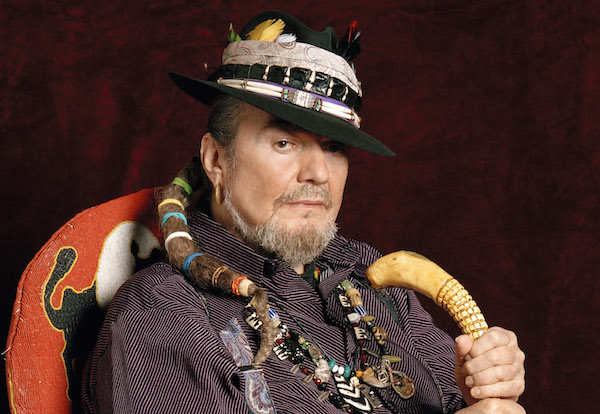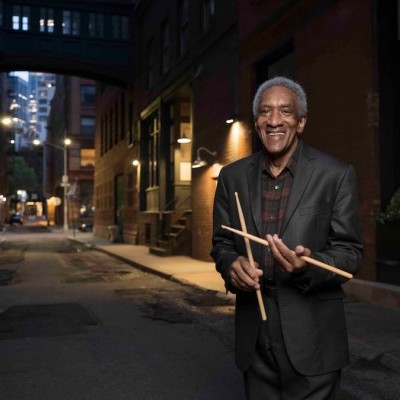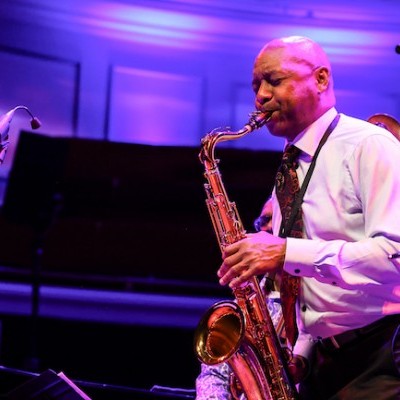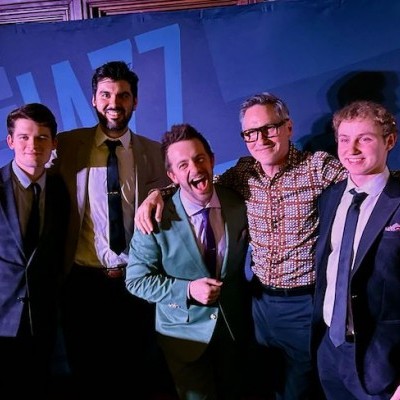Jun 3, 2025 11:25 AM
In Memoriam: Al Foster, 1943–2025
Al Foster, a drummer regarded for his fluency across the bebop, post-bop and funk/fusion lineages of jazz, died May 28…

Dr. John (1941–2019)
(Photo: Bruce Weber)Mac Rebennack, pianist-guitarist-vocalist, purveyor of funk and voodoo mythology and a true son of New Orleans, died of a heart attack on June 6. He was 77. Better known by his stage name, Dr. John, he was part of the piano lineage coming out of Professor Longhair that included Huey “Piano” Smith, James Booker and Allen Toussaint. A prolific songwriter and charismatic performer, his music was imbued with the rollicking spirit of the Crescent City and its characteristic undulating second-line rhythm.
Born on Nov. 20, 1941, Rebennack grew up in the racially mixed Third Ward, birthplace of Louis Armstrong. The son of Dorothy and Malcolm Rebennack, who owned an appliance store and record shop, he began picking out melodies on the family piano at age 3, and by age 6 had been taught by an aunt to play “Pinetop’s Boogie Woogie.” After getting his first guitar at age 8, he started copying the blues licks of Lightnin’ Hopkins and T-Bone Walker. His first guitar teacher—Walter “Papoose” Nelson, who played with Professor Longhair and Fats Domino—turned the youngster on to Mickey Baker and Billy Butler.
It was a musician-hustler-junkie named Shank who got Rebennack involved with the narcotics scene as a 13-year-old errand boy. He eventually started using heroin himself in the 11th grade, beginning an addiction that plagued him for decades, until he finally got clean in 1989. After being expelled from school in 1955, Rebennack started gigging around New Orleans with local bands, including The Skyliners, Frankie Ford & The Thunderbirds and Jerry Byrne & The Loafers. He joined the musicians union in 1956 and began recording professionally for Johnny Vincent’s Ace Records, working at Cosimo Matassa’s fabled J&M Studios on sessions for Eddie Bo, Paul Gayten, Roy Brown, Earl King and Joe Tex.
While making $60 a week at Ace, he came under the tutelage of saxophonist Alvin “Red” Tyler, who schooled him on the ins and outs of being an A&R man. “My job was to find the artist, get him hooked up with the company, if he didn’t have his own material write it for him, arrange the material, hire the musicians, cut the date, master the date and do all of the work up to the pressing of the record itself,” he told Marv Hohman in a 1975 DownBeat interview. “The whole thing was my responsibility, even teaching the artist the songs and rehearsing the band ... .”
By age 17, he had co-written “Lights Out,” a regional hit for Jerry Byrne on the Specialty label. He had his own regional hit, cut in August 1959, with a Bo Diddley-influenced instrumental called “Storm Warning” on Rex Records, and shortly after began touring in rock ’n’ roll and r&b package shows that traveled the South.
Rebennack’s promising career as a session guitarist and sideman was halted at age 20 when the tip of his finger was shot off in an altercation at a motel in Jacksonville, Florida, in 1961: He happened onto the scene of bandmate Ronnie Barron being pistol-whipped by the motel owner, who had caught the singer with his wife. “I went to get the gun out of the guy’s hand,” Rebennack wrote in his 1994 autobiography. “We wrestled for it; I thought my left hand was over the handle but I was actually grabbing the barrel. I beat the guy’s hand against the bricks trying to get the gun away from him and the gun went off. I looked down and saw the second finger of my left hand, my fretting hand, hanging by a thread. At the moment I was shot, I saw not just my life but my career pass before my eyes.”
After James Booker taught him how to play organ, Rebennack started hustling gigs at strip joints, dances and jam sessions on Bourbon Street. He was later arrested on drug charges and sentenced to two years in the Federal Correctional Institution, Fort Worth, Texas.
When he was released in 1965, a campaign led by New Orleans District Attorney Jim Garrison (of Kennedy Assassination conspiracy fame) was underway to clean up the Crescent City by padlocking nightclubs on Bourbon Street. This anti-vice crusade led to a mass exodus of New Orleans musicians to the West Coast.
Settling into Los Angeles, Rebennack became a first-call session musician, playing on albums by Sonny & Cher, Canned Heat, Frank Zappa & The Mothers of Invention, Jackie DeShannon, Harry Nilsson, Stephen Stills and others. For his own first recording as a leader, Gris-Gris, released on ATCO Records in January 1968, he adopted the persona of “Dr. John, The Night Tripper,” based partially on the life of a real person: Dr. John Montaine, a Senegalese prince and healer who came to New Orleans from Haiti in the mid-1800s.
A free man of color, this earlier Dr. John kept an assortment of snakes and lizards, along with embalmed scorpions, and animal and human skulls. He also sold gris-gris, or voodoo amulets, that protected the wearer from harm. Feeling a spiritual kinship with him, Rebennack took on the name Dr. John Creaux for the songwriting credits billed to him on Gris-Gris. The album became an underground FM radio staple on the strength of hypnotic tracks like “I Walk On Guilded Splinters” and other swampy originals like “Gris-Gris Gumbo Ya Ya” and “Danse Kalinda Ba Doom,” all of which registered with the burgeoning hippie audience.
On tour in support of Gris-Gris, Rebennack combined New Orleans-style r&b with psychedelic rock and elaborate stage shows, replete with snake dancers, feathered costumes, bone necklaces, amulets and headdresses, voodoo beads and a bag full of glitter he inevitably tossed to his audiences.
His darkly apocalyptic, psychedelic follow-up, Babylon, confused some listeners, as did 1970’s Remedies, which included the 17-minute “Angola Anthem,” taking up an entire side of the vinyl album while discussing the Louisiana penitentiary. It was Jerry Wexler who suggested that Rebennack get together with other New Orleans musicians in Los Angeles and record an album of Crescent City classics, resulting in 1972’s rootsy Dr. John’s Gumbo, the album that brought worldwide attention to the New Orleans r&b tradition.

Foster was truly a drummer to the stars, including Miles Davis, Sonny Rollins and Joe Henderson.
Jun 3, 2025 11:25 AM
Al Foster, a drummer regarded for his fluency across the bebop, post-bop and funk/fusion lineages of jazz, died May 28…

“Branford’s playing has steadily improved,” says younger brother Wynton Marsalis. “He’s just gotten more and more serious.”
May 20, 2025 11:58 AM
Branford Marsalis was on the road again. Coffee cup in hand, the saxophonist — sporting a gray hoodie and a look of…

“What did I want more of when I was this age?” Sasha Berliner asks when she’s in her teaching mode.
May 13, 2025 12:39 PM
Part of the jazz vibraphone conversation since her late teens, Sasha Berliner has long come across as a fully formed…

Roscoe Mitchell will receive a Lifetime Achievement award at this year’s Vision Festival.
May 27, 2025 6:21 PM
Arts for Art has announced the full lineup for the 2025 Vision Festival, which will run June 2–7 at Roulette…

Benny Benack III and his quartet took the Midwest Jazz Collective’s route for a test run this spring.
Jun 3, 2025 10:31 AM
The time and labor required to tour is, for many musicians, daunting at best and prohibitive at worst. It’s hardly…